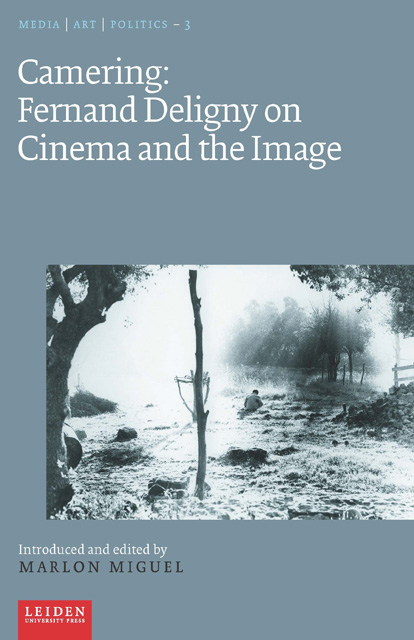Book contents
- Frontmatter
- Contents
- Epigraph [1996]
- Translator’s Note
- General Introduction
- Cinema. Cine-Club [1934]
- The Camera, a Pedagogical Tool [1955]
- He’s Still One of Us [1971]
- Camering [1977]
- Miscreating [1979]
- Camering [1982]
- The Alga and the Fungus [1982]
- Fossils Have a Hard Life: Apropos of the Image [1982]
- Camering [1978-1983]
- The Distinctiveness of the IMAGEs [1988]
- What Is Not Seen (by the Self ) [1990]
- Postface. Minor Gestures, Minor Media
What Is Not Seen (by the Self ) [1990]
Published online by Cambridge University Press: 16 November 2022
- Frontmatter
- Contents
- Epigraph [1996]
- Translator’s Note
- General Introduction
- Cinema. Cine-Club [1934]
- The Camera, a Pedagogical Tool [1955]
- He’s Still One of Us [1971]
- Camering [1977]
- Miscreating [1979]
- Camering [1982]
- The Alga and the Fungus [1982]
- Fossils Have a Hard Life: Apropos of the Image [1982]
- Camering [1978-1983]
- The Distinctiveness of the IMAGEs [1988]
- What Is Not Seen (by the Self ) [1990]
- Postface. Minor Gestures, Minor Media
Summary
The Era Of The Image. We don't live in the age of the image, regardless of what they say.
The era of the image! Even though we have never been further from the image. We’re in the century of language, of chitchat, of verbalised reproduction, of unbridled speech. One has no choice but to talk. The image is what Janmari, the autistic child in Ce Gamin, là (That Kid, There), understands; it's his mode of thinking, he for whom there is no language… .In my life, I’m constantly grappling with this absence, this vacancy, this mode of thinking apart.
It's evident that these children, who have no use of language, think. They need to be left in peace, but the Institution can't handle that. It can't handle the absence of language, and nothing can be done about this. We need there to be language somewhere or we’re lost.
People cling to the characteristic of language that preserves their singularity in relation to the animal… .An old fear …
The Image, The Animal. Now, it may be that the image is part of the animal kingdom… .This is no doubt very much the case: The image lies deep within the purview of the memory of the species, and the memory of the species is something that all species have in common, including the human species… .People can't handle that. I don't know why we can't handle the human species being taken, in the literal sense of the term, why we regard it as a species unlike the others that …
The image is the means by which the species persists despite everything… .It's a trace … a trace that awaits, on the lookout….
This is part of what cinema entails; that is, an immediate enthusiasm. And we don't know why, but we’re moved by what we end up calling images, which are not the effect of language; images move us in a way that goes well beyond language… .There are some who have managed this—whether they realise it or not… .The Tramp is one of them, of that there is no doubt: his images move us immediately, and very deeply; they overtake everyone.
- Type
- Chapter
- Information
- Camering Fernand Deligny on Cinema and the Image , pp. 235 - 238Publisher: Amsterdam University PressPrint publication year: 2022



